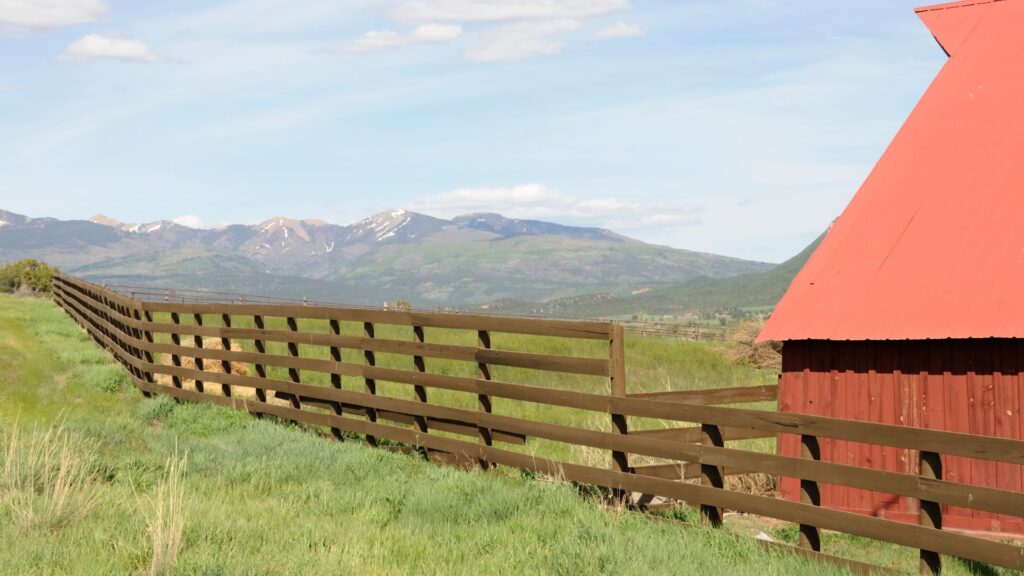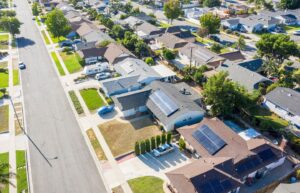In Aurora, Colorado, a city with a population of over 386,000 residents and spanning acres of historic sites, lies an intricate tapestry of history, including many historic landmarks that many are unaware of. This bustling city, now known for its vibrant community, diverse cultural landscape, and population, has roots that stretch deep into the annals of American history, encompassing historic landmarks, historic sites, and an arts center.
From its early days as a pivotal point in the development of the Denver-Aurora Metropolitan Area, including its time as a farming community and a historic landmark, to its significant role in military history at the Fitzsimons Army Hospital, now a center overseen by the city council, Aurora’s past is as rich and varied as its population.
The historical foundations and past of Aurora, Colorado, built as a farming community, are not just footnotes in history books but are alive in the streets and structures that define this dynamic city with its growing population today. Residents walk amidst landmarks that whisper stories of yesteryears—each corner holding a piece of the puzzle, including the city council, farming community, and population center, that has shaped Aurora into what it is now.
Key Takeaways
- Aurora’s rich history is rooted in its agricultural beginnings, with the DeLaney Farm Region serving as a testament to its past, highlighting the importance of understanding local heritage.
- The city’s landmarks, including historical buildings and sites, tell stories of Aurora’s development and cultural evolution, making them valuable resources for both residents and visitors.
- Aurora’s original region offers unique insights into its founding days, emphasizing the significance of preserving historical narratives for future generations.
- The military heritage of Aurora contributes significantly to its identity, underscoring the city’s role in national defense and the community’s respect for veterans.
- Educational and cultural landmarks in Aurora play a crucial role in fostering community engagement and appreciation for arts and history, enriching residents’ quality of life.
- Efforts to preserve Aurora’s history, including its historic districts, are vital for maintaining the city’s character and ensuring that its past continues to inform and inspire future generations.
Aurora’s Historical Overview
Frontier Beginnings
Aurora’s journey began as a frontier town in the late 19th century, evolving into a historic landmark and center with a growing population and school. Initially, it was a mere stopover for gold seekers and adventurers, dreaming of riches in the West, but it soon built into a historic landmark with a growing population and a school. They established the first settlements, laying down the foundation and roots of what would become a vibrant community, built as a historic landmark with a growing population.
The town’s early days, marked by hardship and resilience, built a school to serve its growing population. Residents faced challenges from harsh weather to scarce resources. Yet, they persevered, driven by hope and the promise of a new beginning.
Gold Rush Impact
The gold rush era brought significant changes to Aurora. It attracted prospectors, miners, and entrepreneurs from across the nation. This influx of people contributed to rapid population growth and economic expansion.
Businesses sprang up to cater to the needs of the gold seekers. Hotels, saloons, and supply stores lined the streets, turning Aurora into a bustling hub. The town’s strategic location also made it a key trading post during this period.
Development Milestones
As Aurora transitioned into the 20th century, it continued to evolve beyond its gold rush origins. Infrastructure improvements like roads and railways connected it with neighboring cities, facilitating trade and mobility.
Educational institutions and public services were established, enhancing residents’ quality of life. These developments signaled Aurora’s transformation from a frontier town into a modern city.
Landmarks and Their Stories
Aurora Fox Arts
Residents cherish the Aurora Fox Arts Center as a cornerstone of culture. Its foundation dates back to 1946, initially serving as a movie theater. Through years of transformation, it now stands as a beacon for performing arts within the area. The site spans several thousand square feet, offering ample space for creativity to flourish.
They have witnessed countless performances here, ranging from plays to musicals. This evolution marks a significant chapter in Aurora’s cultural landscape, showing how spaces can adapt and grow over time.
Stanley Marketplace
The Stanley Marketplace’s history tells a tale of innovative transformation. Once an aviation manufacturing facility covering acres of land, it has morphed into a vibrant hub for shopping, dining, and community events. This change began around 2015 when developers saw potential in the abandoned site.
Today, they flock to its halls, which house over 50 independently owned businesses. Its vast size accommodates not just shops but also areas for community gatherings, making it a central point in Aurora’s growth and development.
Historic Churches
Historic churches dot the landscape of Aurora, each telling its own story of faith and community. These sites have been more than just places of worship; they’ve served as gathering spots for residents through the decades. They stand as testaments to the enduring spirit and unity within the community.
Many of these buildings date back to the early 20th century, their foundations laid by settlers who sought to establish a sense of belonging in a new area. Over the years, they’ve seen generations walk through their doors, each leaving their mark on the fabric of Aurora’s society.
Exploring DeLaney Farm Region
Agricultural Heritage
The rich agricultural heritage of DeLaney Farm stands as a testament to Aurora’s past. Initially, it thrived as a farming community, significantly contributing to the local economy. They cultivated various crops, demonstrating the area’s agricultural versatility and its pivotal role in sustaining the city’s growth.
Residents take pride in this heritage, seeing it as a link to their communal roots. Efforts have been made to preserve this aspect of Aurora’s history, ensuring that future generations understand the importance of agriculture to their city.
Preservation Efforts
Preservation of the DeLaney Farm Historic District has become a priority for the community. They have worked tirelessly to maintain the integrity of this historic site. This includes restoring buildings and landscapes to reflect their original state.
These efforts highlight a commitment to safeguarding Aurora’s historical landmarks. They ensure that the story of DeLaney Farm continues to be part of the city’s narrative.
Public Access
DeLaney Farm is not just a historical site; it is also an educational resource. The farm offers public access, allowing visitors to explore its grounds and learn about its history firsthand.
Educational programs are available, providing valuable insights into farming practices and historical preservation. These initiatives engage residents and tourists alike, fostering a deeper appreciation for Aurora’s agricultural past.
Original Aurora Region Insights
Architectural Diversity
The homes in Original Aurora showcase a rich architectural diversity. They range from quaint bungalows to stately Victorian houses, each telling its own story of the past. This variety reflects the area’s evolution over decades and its ability to adapt to changing times.
Residents take pride in their unique homes. They often share stories of renovations that preserve historical features while adding modern comforts. These efforts maintain the neighborhood’s character and appeal.
Early Development
The early 20th-century development left a significant mark on Original Aurora. It was during this period that the region saw a boom in construction. Infrastructure improvements followed, shaping the area’s layout and accessibility.
This era introduced amenities that attracted more residents, boosting the local economy. Schools, parks, and public services grew, making Original Aurora a desirable place to live.
Community Efforts
Preserving Original Aurora’s identity has become a community mission. Residents have formed groups dedicated to protecting historical sites and promoting heritage awareness.
They organize events like house tours and history talks. These activities foster a strong sense of belonging among community members. They also attract visitors, further highlighting the area’s significance.
Military Heritage of Aurora
Buckley Space Force Base
Residents recognize Buckley Space Force Base as a cornerstone of Aurora’s military heritage. Established in 1943, it has played a crucial role in national defense. Initially serving as an Army Air Corps training facility, it evolved into a key site for aerospace and defense operations. Its strategic importance cannot be overstated, safeguarding the skies and supporting global missions.
The base’s contribution extends beyond security. It significantly impacts the local economy, providing jobs and fostering community ties. Residents take pride in this enduring symbol of strength and resilience.
National Contributions
Aurora’s military installations have been pivotal in shaping U.S. defense strategies. They’ve contributed to technological advancements and strategic initiatives critical to national security. These efforts underscore the city’s role in America’s military framework.
Their ongoing commitment to innovation ensures that Aurora remains at the forefront of defense capabilities. This dedication not only protects the nation but also highlights the community’s contribution to peace and safety on a global scale.
Educational and Cultural Landmarks
Aurora Museum
The Aurora History Museum is an excellent spot to learn about local heritage. It offers residents a deep dive into the city’s past. Through its exhibits, they learn about the evolution of their community from a small town to a bustling metropolitan area.
Visitors find an array of artifacts that tell tales of days gone by. They see how everyday life has changed over the years. The museum also highlights Aurora’s military roots, connecting it seamlessly with the city’s broader history.
Historic Schools
Schoolhouses in Aurora have long been pillars of education. One notable example is the century-old room schoolhouse. It served as the first formal educational facility in the area.
This historic site symbolizes the beginnings of structured learning in Aurora. Residents take pride in how these institutions laid the groundwork for today’s advanced educational facilities. They recognize their role in shaping a literate and informed community.
Cultural Festivals
Aurora thrives on its cultural festivals and events. These gatherings celebrate the city’s diverse community. Each year, festivals bring together people from various backgrounds.
They enjoy music, art, food, and sports, showcasing Aurora’s rich cultural tapestry. Such events not only foster community spirit but also attract visitors from across the metropolitan area and beyond.
Aurora’s Historic Districts Significance
Designation Criteria
To earn the title of a historic district in Aurora, areas must meet specific criteria. They often showcase unique architectural styles or have connections to significant historical events. The city values these districts for their contribution to Aurora’s heritage and identity.
Residents take pride in their neighborhoods’ designation as historic districts. These areas serve as tangible links to the past, offering insights into the city’s development over time. They also play a crucial role in education, complementing landmarks discussed in previous sections.
Economic Benefits
Maintaining historic districts brings economic and cultural benefits. These areas attract tourists, creating opportunities for local businesses to thrive. Moreover, they enhance property values, contributing to the city’s overall economic health.
Culturally, historic districts enrich Aurora’s landscape. They offer diverse experiences that celebrate the city’s history and heritage. This blend of economic growth and cultural preservation makes supporting historic districts a priority for residents and officials alike.
Preserving Aurora’s History
Local Efforts
Local government and historical societies have taken significant steps to protect Aurora’s heritage. They collaborate closely, identifying buildings and sites of historical value. Their efforts ensure that the city’s past remains a vibrant part of its future.
Residents see their work in the preservation of Victorian-style homes and other landmarks. These structures stand as testaments to Aurora’s rich history on the prairie. The dedication to maintaining these sites showcases a commitment to heritage conservation.
Community Action
Community involvement has been crucial in preserving Aurora’s history. Residents volunteer for cleanup days and participate in fundraising events. They understand that their actions today shape the legacy they leave for future generations.
Initiatives led by locals have saved many historical buildings from neglect or demolition. Their passion fuels ongoing projects, making history accessible to everyone. This collective effort strengthens the bond between Aurora’s past and present.
Success Stories
The restoration of historic fire stations highlights successful preservation efforts. These projects required significant investment but were made possible through grants, donations, and volunteer labor. The mayor often praises these achievements, recognizing the community’s role in safeguarding Aurora’s heritage.
Such successes inspire further action. They prove that with determination, even the most challenging preservation tasks can be accomplished. Residents take pride in these victories, seeing them as milestones in the ongoing journey to honor their city’s history.
Delving into Aurora, Colorado Foundational Roots
Aurora, Colorado, stands as a testament to history and culture, its story woven from the threads of military heritage, educational milestones, and architectural marvels. Residents and visitors alike find in Aurora a rich tapestry that reflects the broader narrative of American development. From the pioneering spirit of the DeLaney Farm Region to the academic pursuits echoed in its educational landmarks, Aurora invites exploration and appreciation. Its historic districts serve not just as reminders of the past but as living chapters in an ongoing story, one that continues to evolve while honoring its roots.
The preservation of Aurora’s history is not just about safeguarding old buildings; it’s about keeping the community’s collective memory alive, fostering a sense of identity and continuity. It encourages residents to delve deeper into their city’s past, promoting engagement and pride. As Aurora marches forward, its history remains a foundation upon which future generations can build.




